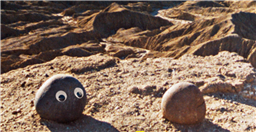‘Hollywood 2.0’: How the Rise of AI Tools Like Runway Are Changing Filmmaking

When “Everything Everywhere All At Once’s” visual effects artist Evan Halleck was working on the rock universe scene, he brought in cutting-edge artificial intelligence tools from Runway — such as the green screen tool that removes the background from images. “It was cutting things out better than my human eye was, and it gave me a clean mat that I could use for other things.”
From the rise of deepfake technology to AI being used to generate scripts, AI is on the rise. It’s faster, cheaper and Halleck says, on a film like the Oscar-nominated A24 film, “Rotoscoping, in my opinion, has been a very slow and painful process. So, it was nice to automate things.”
https://youtube.com/watch?v=X1sSbr4ciJU%3Fversion%3D3%26%23038%3Brel%3D1%26%23038%3Bshowsearch%3D0%26%23038%3Bshowinfo%3D1%26%23038%3Biv_load_policy%3D1%26%23038%3Bfs%3D1%26%23038%3Bhl%3Den-US%26%23038%3Bautohide%3D2%26%23038%3Bwmode%3Dtransparent
For the film’s rock scene, Halleck says, “We used a green screen tool. Pulleys pushed the rocks, gravel and sand forward. But when I was cutting those things out of the shot, things were not clear.” Not only did he have a tight deadline, but the VFX team on the film was small — made up of eight people — so he sought out alternatives that would speed things up and turned to Runway CEO Cris Valenzuela, who helped build the tools.
Time was of the essence. Runway AI tools optimized his work, Halleck says, “I was cutting out the characters, placing them cleanly on a plate shot in minutes versus what takes half a day.”
Admittedly, Halleck wishes he had discovered a tool like Runway sooner. In the scene where Michelle Yeoh’s Evelyn flips through multiverses in seconds, all 300 shots were handmade. “I look back and I wish I had that for when we were working on it, instead of spending weeks working on it and photoshopping aliens,” Halleck says.
Valenzuela has seen the growth of Runway working on projects for New Balance, Alicia Keys and even “The Late Show with Stephen Colbert.” More and more filmmakers and visual effects artists, he says, are adopting AI. He says, “They’re using it, not just for its speed, but it automates the tedious and time-consuming aspects of making videos and films.” He adds, “It’s transformative because it frees up your time and costs to focus on the creative iterations and ideas. It translates days of work into minutes.”
The growth of AI, particularly in VFX doesn’t have to mean a black-or-white process where adoptees of the tech automate everything. Valenzuela says, in the case of “Everything Everywhere All At Once” and working with Halleck to deliver those clean shots, “you work in a very collaborative way to enhance the process.”
While AI has come into the conversation lately, the technology has been around for a while. “South Park” creators Matt Stone and Trey Parker made an entire film using a deepfake Donald Trump last year. “They’re paving the way. People might be freaked out, but there are going to be a ton of incredible use cases of it and there’s probably going to be some bad things to come, but that comes with any new technology.”
Valenzuela has countless examples of organizations adopting it. “The Late Show…” uses AI almost on a daily basis. “They’re using it almost for on a daily basis to translate hours of work. The team is able to iterate their ideas faster, and it’s helping them augment their creative workflow.” He adds, “I’m calling it Hollywood 2.0 where everyone is gonna be able to make the films and the blockbusters that only a handful of people were able to before.”
Read More About:
Source: Read Full Article